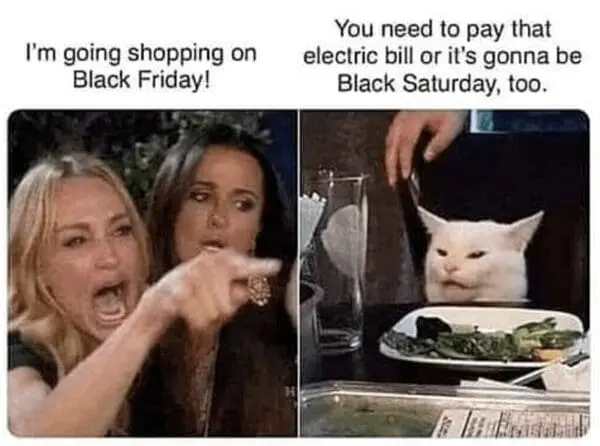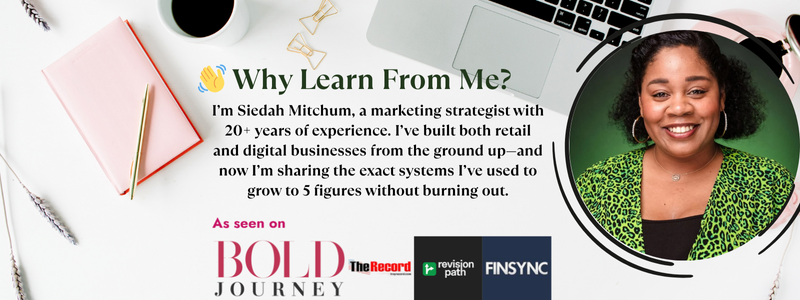
Let’s be honest — most store owners are sprinting into the holidays hoping sales magically “pick up.”
You’re restocking inventory, setting up displays, posting on social media, and praying that this season will finally be “the big one.”
But here’s the truth — hope isn’t a strategy.
I’m pulling back the curtain today and showing you exactly how I plan my Black Friday and holiday marketing campaigns — the same system I’d hand you if you were sitting across from me as my client.
This isn’t theory.
It’s tested.
It’s simple.
And it works — even if you don’t sell online.
Let’s Start With the Truth
Almost half of small business owners still don’t use email marketing — and that one choice quietly costs them thousands of dollars every year.
When I ask store owners why, I usually hear one of three things:
“I don’t sell online.”
“I don’t have time.”
“My customers already follow me on Instagram.”
Let’s clear this up once and for all:
Social media doesn’t pay your bills.
Email does.
They say “email is dead.” Maybe that’s true for influencers chasing trends — but it’s not true for business owners who want consistent, predictable sales.
When I ran my retail store, I knew I couldn’t rely on Instagram or TikTok for every sale. I’d post, tag products, and hope people showed up. But most didn’t — and I was tired of building my business on borrowed platforms.
One day, I tested something simple.
At a local pop-up market, I put out a small email sign-up sheet — just name and email.
I told shoppers,
“Join my list and I’ll send updates about new scents and crystal drops.”
A few weeks later, someone walked into my shop and said,
“I got your email — I couldn’t miss it!”
That’s when I realized something every retail business owner needs to hear:
👉 You don’t need an algorithm.
👉 You just need a way to reach your people directly.
That one moment changed how I approached marketing forever.
Here’s the Strategy — Steal It
This is the same Black Friday and holiday strategy I give to my private clients. It’s free to start, easy to repeat, and perfect for product-based or retail business owners.
Step 1: Collect Emails In Person
Start today — not next month.
Use a free platform like MailerLite or Mailchimp. Create a simple form that asks for name and email.
Print a QR code that links to your form and display it at checkout.
Offer a small incentive, such as:
“Join our VIP list for $5 off your next visit”
or
“Get early access to our Black Friday deals!”
💡 Pro Tip: Add that QR code to receipts, signage, or even your business cards. You want every customer to see an easy way to stay connected.
This one step helps you build a list of customers who actually want to hear from you — no chasing algorithms, no fighting for attention.
Step 2: Stay in Touch Weekly or Biweekly
Your customers want to feel connected, not sold to.
That’s why you should send consistent weekly or biweekly emails — even outside of big promotions.
But don’t just send discounts.
Send stories.
Talk about what’s new, what’s selling out, and what’s inspiring your products this season.
You could write about:
-
The story behind your best-selling product.
-
How you’re preparing for the holidays as a small business owner.
-
A customer who loved your product (and what it meant to them).
When people feel emotionally connected to your story, they don’t just shop once — they come back again and again.
Step 3: Use My 5-Email Holiday Framework
This is the exact campaign I’ve used (and helped clients use) to generate consistent sales during the busiest season of the year.
It works because it speaks to all three parts of your customer’s brain:
🧠 Primal — urgency, scarcity, exclusivity
💖 Emotional — story, connection, meaning
📊 Rational — value, convenience, proof
Email #1: VIP Early Access (Black Friday)
Subject: “You’re getting this before the public.”
This email creates exclusivity and urgency.
Reward your subscribers by letting them shop first. Even if you only open your sale one day early, it makes your audience feel special — and that emotional hit drives conversions.
Email #2: Small Business Saturday Story
Subject: “Here’s why your support matters.”
Use this one to share your story.
Talk about how far you’ve come, what you’ve learned, and what their support means to you.
Connection builds trust — and trust turns browsers into buyers.
Email #3: Holiday Gift Guide
Subject: “Need help choosing? Here’s what’s trending.”
Curate a list of your best-sellers or staff favorites.
Group them by themes like “Gifts Under $25,” “Self-Care Favorites,” or “Last-Minute Magic.”
You’re helping your customers make decisions — and in December, time-saving content is gold.
Email #4: 12 Days of Christmas Countdown
Subject: “Day 1: Surprise deal inside 🎁”
Run a short campaign where you highlight one product or offer each day for 12 days.
This keeps your brand top of mind throughout the holiday season and creates that addictive “what’s next?” effect.
Email #5: After-Christmas Reset
Subject: “We’re clearing shelves and starting fresh.”
This is your post-holiday clean-up campaign.
Clear out leftover inventory, introduce new arrivals, or invite customers to join your loyalty program.
This keeps the sales momentum rolling into the new year — and reminds your audience that your brand doesn’t disappear once the holidays end.
Why This Works (The Science Behind It)
This strategy doesn’t rely on luck — it relies on psychology.
It’s built around the PRIMAL → EMOTIONAL → RATIONAL framework I teach my clients.
-
PRIMAL: Trigger urgency and scarcity. (VIP access, countdowns, early bird perks)
-
EMOTIONAL: Make it personal. (Stories, gratitude, behind-the-scenes moments)
-
RATIONAL: Provide logic and proof. (Clear discounts, best-sellers, testimonials)
When you communicate in this order, you move your audience from “maybe later” to “take my money.”
It’s why this system works year after year — even for brick-and-mortar businesses that don’t sell online.
Your Assignment (If You Were My Client)
Start small.
📩 Goal: Collect your first 10 emails this week.
That’s it.
If you can do that, you’re already ahead of nearly half of all small business owners.
Then, schedule one email a week using the framework above.
Every time you ring up a sale, meet someone at an event, or pack an order, ask yourself:
“How can I stay connected to this person after they leave?”
That question alone can transform your business.
Because the real profit isn’t in the one-time purchase — it’s in the relationship you build after the sale.
Bonus Tip: Add Automation for Consistency
Once your first campaign is done, set up a simple welcome automation:
-
Email 1: Thank them for joining + share your story.
-
Email 2: Introduce your top products or a seasonal favorite.
-
Email 3: Invite them to join your loyalty list or follow your blog.
Automation helps you stay consistent even when life gets busy — especially during the holiday rush.
If You’re Serious About Scaling
If you’re ready to make this your calmest, most profitable holiday season yet — start by systemizing your marketing.
✅ Build your list
✅ Create your campaigns early
✅ Automate your follow-ups
That’s how you shift from survival mode to system mode.
Because at the end of the day, the holidays shouldn’t feel like chaos.
They should feel like clarity.
And when you use this strategy, that’s exactly what you’ll have.
Final Thoughts
You don’t need a massive following or fancy software.
You just need a system that connects your story to your customers — consistently.
If this strategy helped you, make sure you’re subscribed for more templates, automations, and behind-the-scenes examples I only share with my subscribers.
Let’s make this your most peaceful, profitable holiday season yet. 💌
— Sie
Boss. Mom. Alchemist.







Leave a Reply